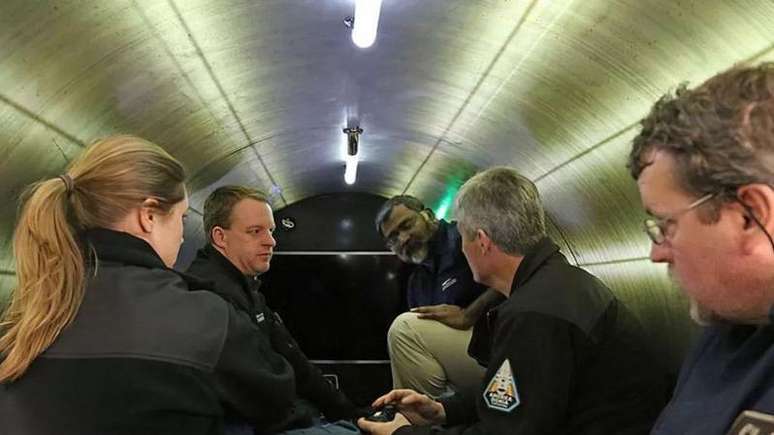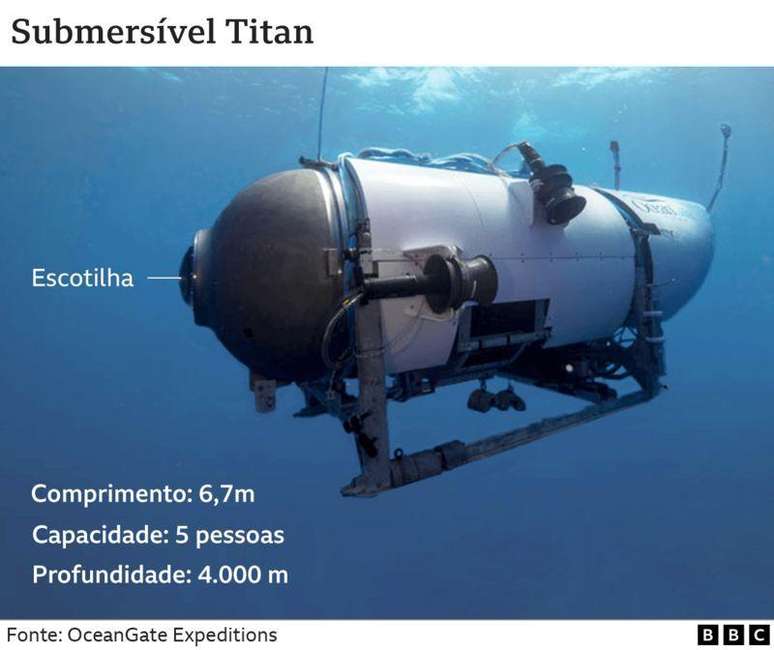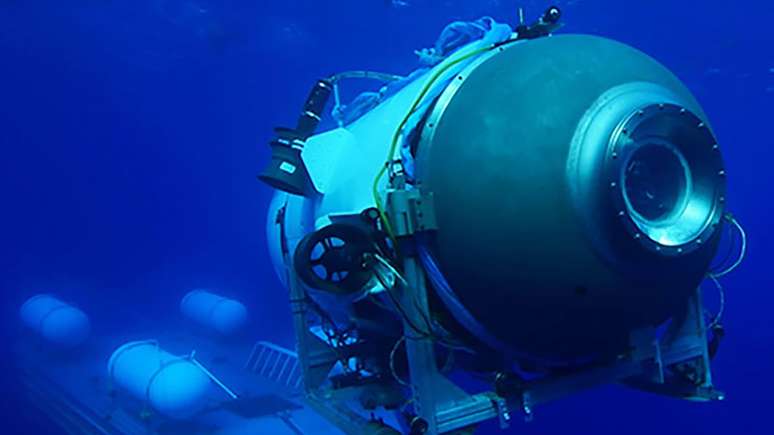Dr. Ken Ledez, a hyperbaric medicine specialist at a Canadian university, explains that differences in metabolism can increase or decrease the chances of survival.
html[data-range=”xlarge”] figure image img.img-494adb52f8546d4e2f955130a9531d01sfb5v4p0 { width: 774px; height: 435px; }HTML[data-range=”large”] figure figure img.img-494adb52f8546d4e2f955130a9531d01sfb5v4p0 { width: 548px; height: 308px; }HTML[data-range=”small”] figure figure img.img-494adb52f8546d4e2f955130a9531d01sfb5v4p0, html[data-range=”medium”] figure image img.img-494adb52f8546d4e2f955130a9531d01sfb5v4p0 { width: 564px; height: 317px; }
With each hour that has passed since Sunday (18th), when the submarine Titan disappeared in the Atlantic, tension has increased over the situation of the five people on board.
The vessel departed with an approximately 96-hour supply of oxygen and is approaching that limit. John Mauger, of the United States Coast Guard, said this Wednesday (21), around noon Brasilia time, that the submarine would have about 20 hours of oxygen remaining.
That is, there would be supplies until about 8 on a Thursday.
In an interview with BBC News, Dr Ken Ledez, a specialist in hyperbaric medicine at a university in St John’s, Newfoundland, Canada – the point where the Titan departed to visit the wreck of the Titanic at the bottom of the sea – said stated that survival after eventual oxygen depletion would depend on each person’s metabolism.
He adds that, under these circumstances, some may survive longer than others.
“It’s not like [de repente] turn off the light with the switch. It’s more like climbing a mountain,” says Ledez.
“They will have to do everything possible to reduce their oxygen consumption: rest, try to be as relaxed and calm as possible.”

If they are very active, people in this extreme situation can end up speeding up their metabolism and increasing their need for oxygen and carbon dioxide release.
The doctor also explains that hypothermia (low body temperature) can help.
“There is a possibility that they lose their temperature to the point of unconsciousness and could survive this… Their heartbeat can be very slow in cold weather.”
“They could continue [vivos] a week after the limit? I doubt. But some may survive longer than others.”
While the situation is increasingly critical, as the US Coast Guard has warned, some have pointed out that the count of available oxygen supply hours is not as rigid.

Bobbie Scholley, a former US Navy diver, told the BBC there was still hope, even after Thursday morning.
“Everyone is focused on the 96-hour supply window, but it’s not a hard number. I know the research teams aren’t focused on that hard number,” Scholley said.
“This will continue to be a rescue mission after that issue. This gives me hope.”
Businessman Oisin Fanning, who traveled to the Titan and knows a few people aboard the missing submarine, said he believed the crew would do everything to maximize oxygen and recalled that those involved they underwent training before joining the expedition.
“They will do anything to stay calm, breathe shallowly and hold on to oxygen for as long as possible,” Fanning said.
Source: Terra
Ben Stock is a lifestyle journalist and author at Gossipify. He writes about topics such as health, wellness, travel, food and home decor. He provides practical advice and inspiration to improve well-being, keeps readers up to date with latest lifestyle news and trends, known for his engaging writing style, in-depth analysis and unique perspectives.








